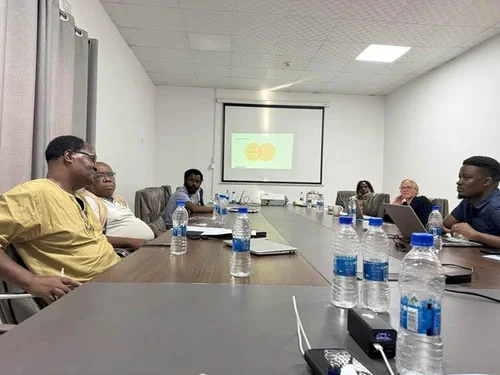In recent years, many African courts have been quietly introducing forms of artificial intelligence and digital case-management tools. These systems, often behind the scenes, are already easing one of the judiciary’s biggest burdens: case backlogs. Without much fanfare, courts in Tanzania, Nigeria, Kenya, Rwanda, Uganda and others are adopting AI-assisted transcription, electronic case management, remote hearings, and digital filing – and seeing improvements in efficiency and timeliness of justice.
Take Tanzania, for example. The judiciary there has begun using an AI-powered transcription and translation system across courtrooms, capable of handling different dialects of Kiswahili and translating into English, or vice versa. The aim is to replace manual transcription – a slow and error-prone process – with automated tools that reduce delay, misunderstanding, and cost. Chief Justice Ibrahim Juma has stressed that judges’ time is better spent making decisions, not doing clerical work.
Similarly, in Nigeria, stakeholders have been pushing forward with solutions like JUDIC AI and Docket Master, digital filing systems, and remote hearings. These tools have reportedly halved case dockets in five states and sped up trials for thousands of pre-trial detainees. Yet, resistance remains – some courts still cling to handwritten records, and there is concern over judges who lack digital literacy.

Table of Contents
Where AI Is Making a Difference
Several African nations are already seeing measurable gains from quietly embedding AI and case-management digitisation into their systems.
- Kenya has pushed forward with e-filing, case status tracking, electronic records, and other ICT tools. The Judiciary there achieved a 99 per cent case clearance rate in a recent period, with almost as many cases disposed of as filed..
- In Rwanda, the government’s five-year strategy includes reducing case backlogs by half; among the tactics are strengthening an Integrated Electronic Case Management System (IECMS), judicial performance tools, and enhancing ADR (alternative dispute resolution) mechanisms like mediation and plea bargaining.
- According to The Observer, Uganda has one of its challenges quantified: in the FY 2023-24 report, Uganda had over 160,000 pending cases, with around a quarter classified as backlog. Efforts are underway to consider AI-powered judicial assistants, more efficient digital systems, and streamlining roles such as court assessors via technological support.
- South Africa is also expanding its online filing and case tracking in superior courts, aiming to reduce late judgments and increase access to justice through digitisation.
Across these countries, AI is being used for:
- transcription and translation of court proceedings, reducing delays caused by manual or multilingual transcription work;
- electronic case filing, tracking and record keeping, meaning people and legal professionals can see case status, file documents, and request hearings digitally;
- remote hearings / virtual courtrooms, which reduce the need for physical transport, allow greater flexibility, and help reduce backlog, especially in remote or rural areas; this has been part of the innovation push.

Obstacles in the Shadows
While the benefits are visible, the adoption of AI and digital case management is not without its challenges. Many of them are low-profile yet have outsized impacts.
- Digital literacy and institutional culture
In some courts, judges and magistrates still prefer or are accustomed to paper‐based systems. There are concerns about recording devices, resistance due to fear of being recorded or concerns about errors in automated tools. - Infrastructure and resources
Reliable electricity, internet connectivity, hardware and software infrastructure remain patchy in many places. Without them, even well-designed digital systems cannot function properly. - Legal, regulatory and ethical concerns
Questions arise over data protection, confidentiality (especially in sensitive cases), algorithmic bias, and ensuring that AI tools are transparent, accountable and subject to oversight. - Equitable access
Courts in remote or under-resourced regions may lag behind urban centres. Delays in deploying tools nationwide can perpetuate disparities in how quickly justice is delivered. - Sustainability and cost
Initial setup costs are often high; maintenance, training, system updates, and support are recurring costs. Securing ongoing funding (government or donor) is often a struggle.
What’s Next: Scaling Quiet Successes
What seems clear is that even small, incremental AI or digital interventions can have outsized effects if well implemented. Here are key areas that stakeholders appear to be focusing on, and which could serve as models or be scaled up.
- Training & capacity building: equipping judges, registrars, and court staff with skills not just to use the tools, but to understand their limits, manage risks (like bias or privacy breaches), and ensure quality control in automations.
- Wider deployment of electronic case management systems: systems like IECMS in Rwanda, e-CMS in Tanzania, case tracking in Kenya, etc., need expansion beyond pilot courts to all courts, including lower and rural courts.
- Promoting remote hearings and virtual courtrooms: especially relevant where transport, distance, or security is an issue. These also reduce the time inmates spend waiting and the costs of moving them physically to courts.
- Alternative Dispute Resolution (ADR) integration**: mediation, plea bargaining, etc., combined with digital tools, can reduce what enters the formal backlog, or resolve cases before they become protracted.
- Policy, legal frameworks & oversight: updated laws to ensure AI adoption is ethical, transparent, with clear rules on data usage, audit, appeals, etc. Also, policies to enforce timeline norms for judgments, e-filing response times, etc.
- Public awareness and stakeholder buy-in: lawyers, litigants, and civil society need to understand what AI tools can do, what risks exist, and how courts are changing. Resistance often stems from fear or misunderstanding.

Conclusion
The adoption of AI Case Management in African Courts may be quiet, but it is gaining momentum—and importantly, showing results. Added efficiency, faster disposition of cases, less time spent doing clerical tasks: these all contribute toward reducing the backlog that has burdened many justice systems. The journey is still far from over: infrastructure gaps, regulatory concerns, uneven access and institutional resistance remain. But the trend is strong, and the promise of timely, equitable, digital-assisted justice is increasingly real.
For courts, governments, legal stakeholders and donors, the task now is to nurture, scale and standardise what’s working—and ensure that no part of the system is left behind.
Join Our Social Media Channels:
WhatsApp: NaijaEyes
Facebook: NaijaEyes
Twitter: NaijaEyes
Instagram: NaijaEyes
TikTok: NaijaEyes





